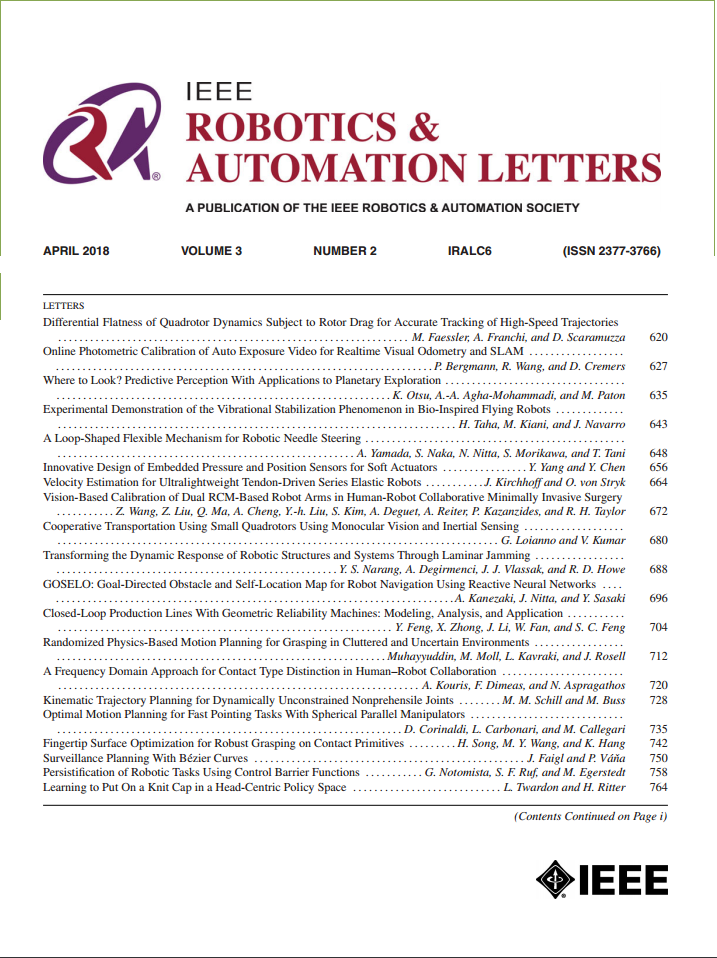Minimally-Back-Drivable Robots for Rehabilitation: Path-Adherent Permissiveness Control via Trajectory Adaptation
IF 4.6
2区 计算机科学
Q2 ROBOTICS
引用次数: 0
Abstract
In pursuit of effective robot-assisted rehabilitation, it is imperative that the robot facilitates rather than hinders the patient's self-movements in appropriate directions. This essential attribute, termed用于康复的最小反向驱动机器人:基于轨迹自适应的路径附着许可控制
为了追求有效的机器人辅助康复,机器人在适当的方向上促进而不是阻碍患者的自我运动是必不可少的。这种被称为“容忍度”的基本属性,在传统的工业机器人中往往是缺乏的。在这封信中,介绍了一种创新的方法,使机器人能够在指定的方向上提供可控的容忍度。该方法的核心是一种新颖的映射功能,该功能可以根据患者监测到的物理效应,动态地调整治疗路径上所需的轨迹。所提出的方法与所使用的受控机器人类型无关,使得即使是最小的反向驱动机器人也可以用于康复目的。这封信概述了该方法的各个方面和潜在应用,包括基于迭代阶段的支持适应政策,以及一系列展示实际可行性的实验。
本文章由计算机程序翻译,如有差异,请以英文原文为准。
求助全文
约1分钟内获得全文
求助全文
来源期刊

IEEE Robotics and Automation Letters
Computer Science-Computer Science Applications
CiteScore
9.60
自引率
15.40%
发文量
1428
期刊介绍:
The scope of this journal is to publish peer-reviewed articles that provide a timely and concise account of innovative research ideas and application results, reporting significant theoretical findings and application case studies in areas of robotics and automation.
 求助内容:
求助内容: 应助结果提醒方式:
应助结果提醒方式:


